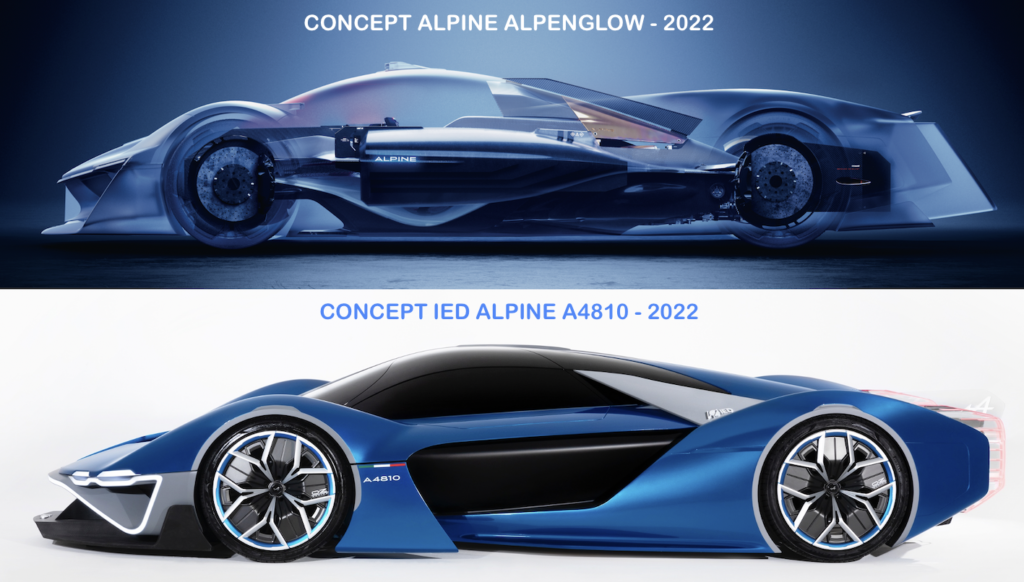

Alpenglow, what a surprising name. For those looking for a definition, Alpine provides one: “Alpenglow refers to a luminous phenomenon in which a horizontal, red-tinged streak of light appears on the mountains before sunrise and after sunset. It clearly expresses the mission of this concept car: to magnify the moment when forms and technologies are revealed.”

I imagine the designer standing in front of his palette, window wide open to the Alpenglow of an evening, to take his creativity to the limit. This is the ultimate concept car for Alpine, meant to sketch out “what the Alpine models of tomorrow will be, both road and competition models. Alpenglow is more than a concept car, it is a true manifesto of the brand before the arrival of the next three 100% electric models from the Dream Garage below.”

Not surprisingly, the Alpenglow is green. In fact, it is blue on the outside (a colour that will be found on production models), but its heart is green. It is a ICE engine (yes, yes!) powered by green hydrogen, one of the solutions envisaged by the brand “for sustainable mobility, since it does not emit CO2 during its production by electrolysis of water and releases water during its combustion. Water thus becomes a key element in the design of Alpenglow. It underlines both its purity and its power.”

You will understand the differences between this architecture and those of 100% EV or fuel cell cars below. “Alpine has embarked on the study of a technology that could foreshadow future Alpine competition and road cars. The hydrogen engine is a solution that reconciles respect for the environment with the inimitable driving pleasure that this type of engine provides: power, lightness and a wealth of sound emotions.” For now, let’s focus on the design of Alpenglow.

Some of the styling details, such as the light signature and the alpine snowflakes that pepper the concept car, may be found on production models. But the aerodynamic shape of the Alpenglow is above all a projection of what the future Alpine hypercar could be in the LMDh category of the 24 Hours of Le Mans, in which the manufacturer will participate in the premier class alongside the Peugeot 9X8 (below).

But Alpine is not just about the (future) Le Mans 24 Hours of 2024, it is also and above all about F1. That’s why Alpenglow’s single-seater-like interior makes the link with F1, while its exterior is reminiscent of endurance prototypes. The driver of the concept car is alone on board and surrounded by the two hydrogen tanks.

To see the interior, we will have to wait until the Paris Motor Show on Monday 17 October, but, according to the manufacturer, “future Alpine cars will be equipped with an intuitive, sporty steering wheel, which will include the same functions as on Alpenglow” and on the latter, this steering wheel is intriguing. It incorporates “hydrogen encapsulated in a transparent triangle at its centre to recall the purity of this technology, the elegance of the brand and its future around clean emissions. The Alpine identity is evoked by snowflakes integrated into this central prism.” The gearshift paddles are transparent, as are the pedals and the rear spoiler, which is positioned very low, reminiscent of the design of the rear of the Peugeot 9X8.

A red line visible from the outside and inside symbolises movement, while the front light signature “heralds a new chapter in Alpine history. A shower of stars is symbolised by luminous triangles that originate on the bonnet and descend to the headlights.”

What technical architecture for Alpenglow?
Alpenglow is not revealing the powertrain of the three future Alpine road cars, all of which will be 100% electric with one or two motors and a battery pack. The three cars are the compact based on the 2024 Renault 5 produced in Douai, the GT crossover to be produced in Dieppe and the A110 replacement in partnership with Lotus below:

The Alpenglow continues to use a combustion engine – here positioned in the middle, as on a Hypercar – but it is no longer powered by fossil fuel but by a green fuel derived from hydrogen. This architecture is conceivable for the end of the decade, i.e. when the three future models in the range will already have their replacement under study in the manufacturer’s offices.

However, hydrogen as a green ‘fuel’ is a plausible option, and would allow Alpine to compete with Porsche, which is working on synthetic green fuel. Porsche and Alpine would thus keep their classic engine blocks powered by zero emission fuel. It should be noted that Renault is working on all avenues and in particular that of the fuel cell powered by on-board hydrogen, which produces electricity on board the vehicle to power an electric machine.
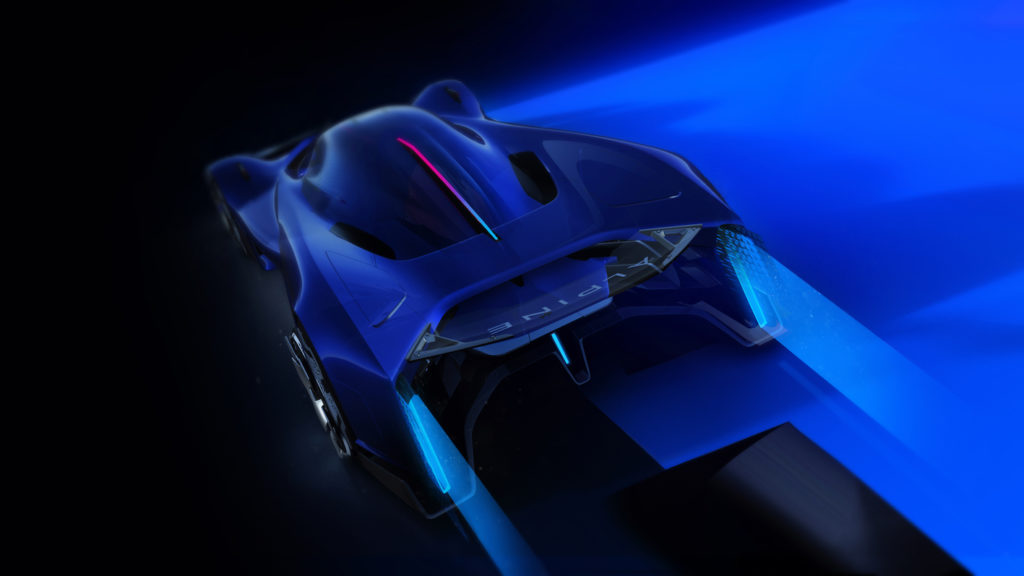
The Scénic Vision presented this year adopts this drive train. We interviewed Gilles Vidal, Renault’s design director, to discuss the impact of these three drivetrains on the design of future models:
-Pure electric like on the R5,
-Internal combustion engine and green fuel as in the Alpenglow
-Fuel cell and hydrogen as on the Scénic Vision

Because integrating a fuel cell and hydrogen tanks has a significant impact on the definition of the proportions and architecture of vehicles. Let’s listen to Gilles Vidal.
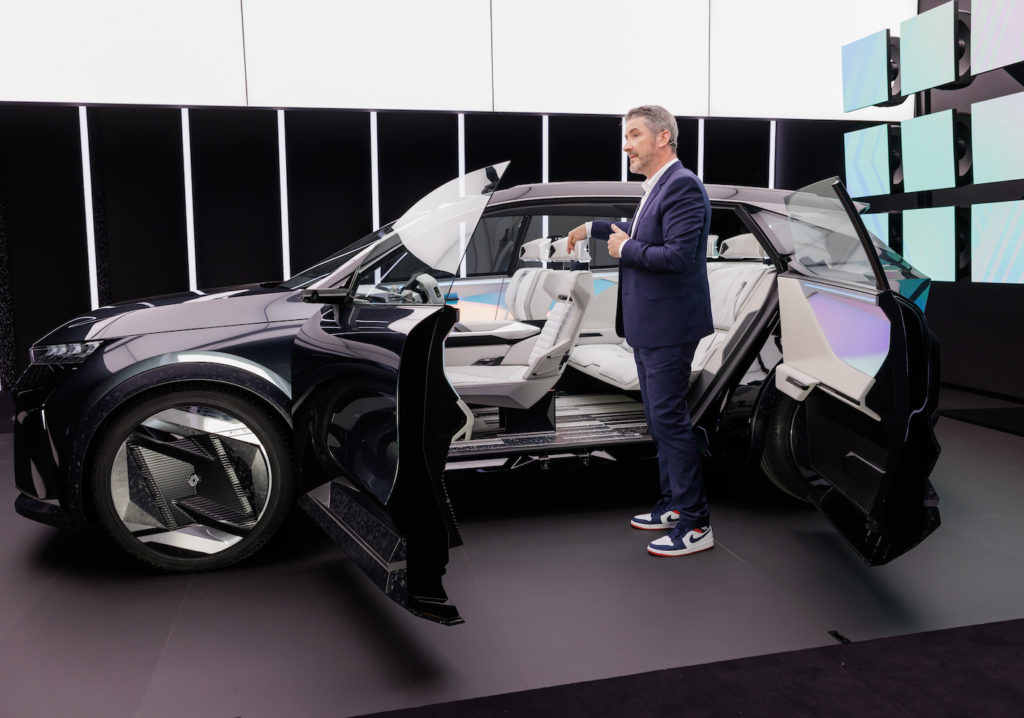
“These hydrogen powertrains are more suitable today for utility vehicles. But the arrival of solid batteries (by 2030), which are more efficient and more compact, will perhaps call into question this type of architecture and perhaps slow down the use of hydrogen in small cars in particular. So much is going to happen so quickly in the evolution of technologies that we need to work on all these architectures in parallel. And this, in order to use what will be the most judicious, and according to what is happening in the automobile world, because we are not actors in all the technological solutions. So, depending on how things evolve, we will have to be intelligent and reactive in order to adopt the right solution for this or that figure.”
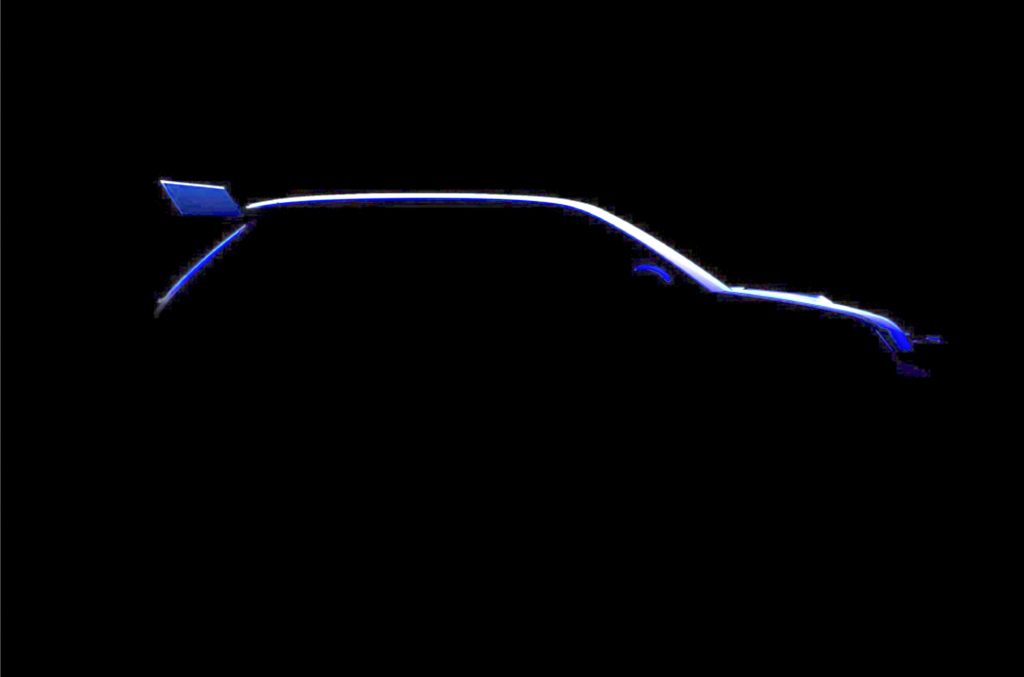
The next Alpine to see the light of day is the B-segment sports car (above) derived from the future Renault 5 electric car of 2024. Then it will be the turn of the GT crossover. It will be produced in Dieppe, as Luca de Meo announced this year when he visited the site (below)

THE BONUS LIGNES/auto
Almost a carbon copy!
The design of the Alpenglow reminded us of the project carried out by 28 master’s students at the Istituto Europeo di Design (IED) in collaboration with… Alpine and unveiled on March 18th. Alpine explained then that “the result of this collaboration between the Italian design school and Alpine is a two-seater supercar – A4810, like the altitude of Mont Blanc – running on hydrogen.” How amazing is that?
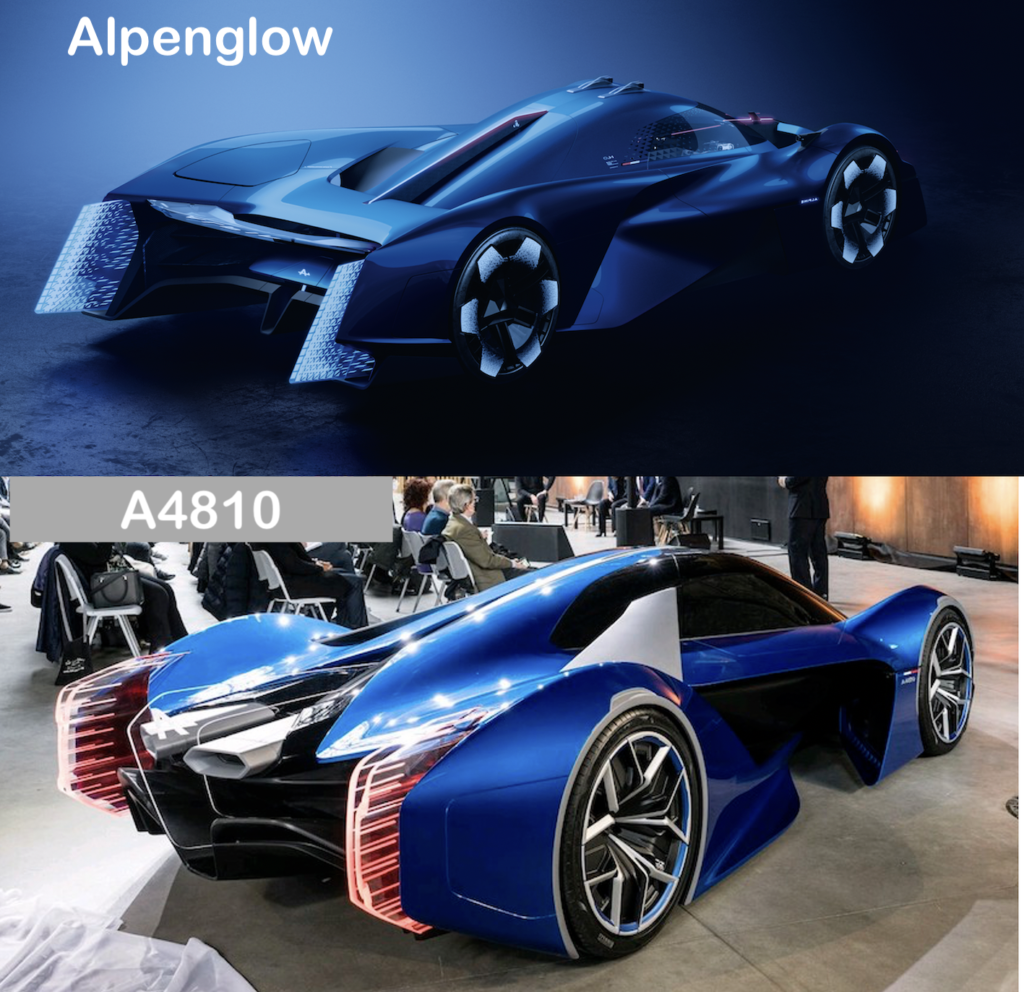
“More technological and environmentally friendly, this car offers a foretaste of the sports models of the future. With this spectacular project by talented students, Alpine is opening up to a new generation of designers and drivers.” The dimensions of the A4810 are virtually identical to those of the Alpenglow: 5.09 m in length compared to 5.21 m for the Alpenglow, 2.01 m compared to 2.14 m and 1.05 m in height compared to 1.02 for the “official” concept car.

Paola Zini, Director of IED Turin, expressed her enthusiasm: “As in previous years, through their great project, the students of the master’s degree were able to experience the notions of transversality of skills and teamwork, in a fertile and visionary environment. Alpine stated that “this contribution with Alpine was marked by passion, enthusiasm and a constant presence. It is a new step in international collaboration. It also gave the students the opportunity to work under the supervision of Antony Villain, Alpine Design Director, Raphael Linari, Alpine Chief Designer, and a number of IED alumni, whom we had the pleasure of meeting again.”
